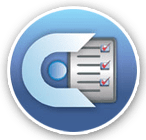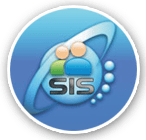While the two have similarities, they serve distinct purposes and have different scopes. Let's investigate the details to understand whether a school management system can be considered an ERP.
1. Definition:
School Management System (SMS):
A school management system is a software platform designed specifically for educational institutions to manage daily administrative tasks such as student attendance, grades, timetables, schedules, and communication with parents and staff.
Enterprise Resource Planning (ERP):
ERP systems are comprehensive software solutions integrating various business processes and functions across an organization, including finance, human resources, procurement, inventory management, customer relationship management (CRM), and more.
2. Scope:
SMS Scope:
A school management system primarily focuses on managing educational-related processes within an institution. It handles student data, academic records, faculty information, scheduling, examinations, library management, and communication.
ERP Scope:
An ERP system, on the other hand, has a broader scope. It encompasses all aspects of an organization's operations, i.e. finance, HR, supply chain, inventory, customer relationship management, etc. ERP systems facilitate seamless integration and data flow across various departments and functions.
3. Functionality:
SMS Functionality:
Standard functionalities of a school management system include:
• Student information management
• Attendance tracking
• Grade management
• Timetable scheduling
• Communication tools for parents, teachers, and students
• Library management
• Examination management
ERP Functionality:
• ERP systems offer functionalities such as:
• Financial management (accounting, budgeting, invoicing)
• Human resources management (payroll, employee data, performance evaluation)
• Supply chain management (inventory, procurement, logistics)
• CRM (customer data, sales management, marketing automation)
• Business intelligence and reporting
4. Integration:
SMS Integration:
• School management systems may integrate with other software solutions such as Learning management systems (LMS), communication tools, or accounting software. However, their integration scope is generally limited to educational tools and applications.
ERP Integration:
ERP systems are designed for extensive integration across all organizational departments and functions. They often integrate with third-party applications, legacy systems, and external data sources to provide a unified view of organizational operations.
Case Study: Streamlining Operations with a School Management System
Background:
XYZ International School, based in Noida, is a leading private K-12 institution that faced challenges in efficiently managing its growing student population, faculty, and administrative tasks. With manual processes and disparate systems, the school needed help in student enrollment, attendance tracking, communication with parents, and academic record management.
Challenges:
• Manual Processes: XYZ School relied heavily on manual processes for student enrollment, attendance tracking, grade management, and communication with parents, leading to errors and inefficiencies.
• Disparate Systems: Various departments within the school used separate systems for managing student data, academic records, financial transactions, and communication, resulting in data silos and lack of integration.
• Limited Communication: Communication between teachers, parents, and administrators needed to be more cohesive, leading to misunderstandings and delays in addressing student-related issues.
• Data Security Concerns: The school stored sensitive student and faculty data across multiple platforms, which made ensuring data security and compliance with regulations challenging.
Solution:
In response to these challenges, XYZ International School implemented a comprehensive SIMS (school management system) to streamline its operations and enhance stakeholder communication.
Key Features Implemented:
• Student Information Management: Centralized database for student information, including enrollment details, academic records, attendance, and health records.
• Attendance Tracking: Automated attendance tracking system with RFID or biometric technology to record student attendance accurately and efficiently.
• Grade Management: An online gradebook for teachers to input grades, generate report cards, and provide real-time feedback to students and parents.
• Communication Tools: Integrated communication platform for sending announcements, newsletters, and notifications to parents, as well as facilitating communication between teachers and parents.
• Admissions and Enrollment: This is an online admissions portal where students can apply for admission, track their application status, and submit required documents electronically.
• Financial Management: This module manages fee payments, invoicing, and financial transactions, providing transparency and accountability in financial operations.
• Security and Access Control: Role-based access control and data encryption ensure data security and compliance with data protection regulations.
Results:
• Improved Efficiency: Automating administrative tasks and streamlined processes led to time savings and reduced administrative workload for staff.
• Enhanced Communication: The school management system improved communication between teachers, parents, and administrators, leading to better parent engagement and student support.
• Better Data Management: Centralized student information and academic records improved data accuracy, accessibility, and reporting capabilities for informed decision-making.
• Increased Transparency: Parents had real-time access to their child's academic performance, attendance, and school-related information, enhancing transparency and accountability.
• Cost Savings: By reducing manual errors and improving operational efficiency, the school realized cost savings in administrative expenses.
Case Study School ERP:
ABC School District: Implementing ERP for Streamlined Operations
Background:
ABC School District, a large public school district with multiple schools and administrative offices, faced challenges in managing its complex operations efficiently—siloed systems led to data redundancy, lack of integration, and inefficiencies in resource allocation.
Challenges:
• Data Silos: Different departments within the school district used disparate systems for finance, HR, procurement, and student information, leading to data duplication and inconsistency.
• Inefficient Processes: Manual processes for budgeting, payroll, and inventory management resulted in errors, delays, and increased administrative burden.
• Lack of Integration: Lack of integration between systems hampered data visibility and hindered decision-making at the district level.
Solution:
ABC School District implemented an ERP system to streamline operations and improve department efficiency.
Key Features Implemented:
• Financial Management: Automated budgeting, accounting, and financial reporting to ensure transparency and compliance.
• Human Resources: Centralized employee data management, payroll processing, and performance evaluation to streamline HR processes.
• Supply Chain Management involves integrated procurement, inventory management, and vendor management to improve resource utilization and cost savings.
• Student Information System Integration: Integration with existing student information systems to ensure seamless data flow between administrative and academic functions.
Results:
• Improved Efficiency: Automating routine tasks and streamlined processes saved time and reduced administrative workload.
• Enhanced Data Visibility: A centralized data repository gave stakeholders real-time access to accurate information for informed decision-making.
• Cost Savings: Optimization of resource allocation and reduction in manual errors led to cost savings for the school district.
• Better Service Delivery: Integrated systems facilitated better coordination between departments, improving service delivery to students, teachers, and staff.
Conclusion:
While School management systems and ERP systems are essential for organizational efficiency, they have different purposes and distinct scopes. A school management system focuses on educational administration, while an ERP system encompasses a broader range of managerial functions. While functionalities may overlap, particularly in areas like student data management, they are not synonymous. Therefore, while a school management system may include some features found in an ERP system, it still needs to fulfil the comprehensive requirements of an ERP.







